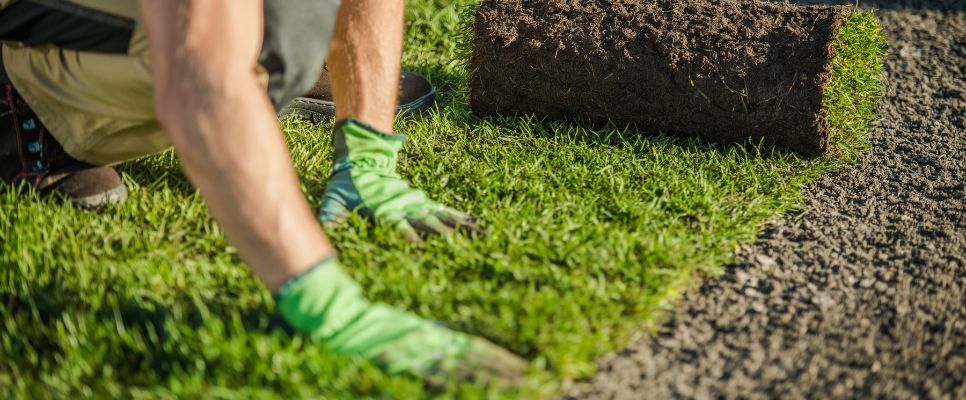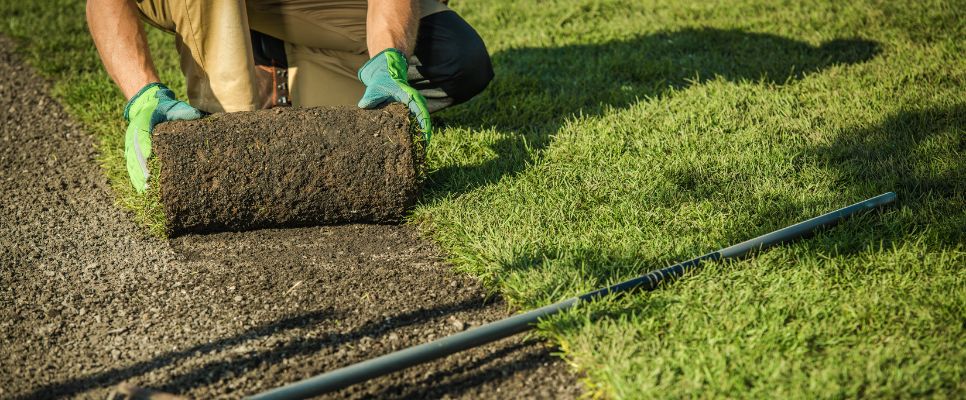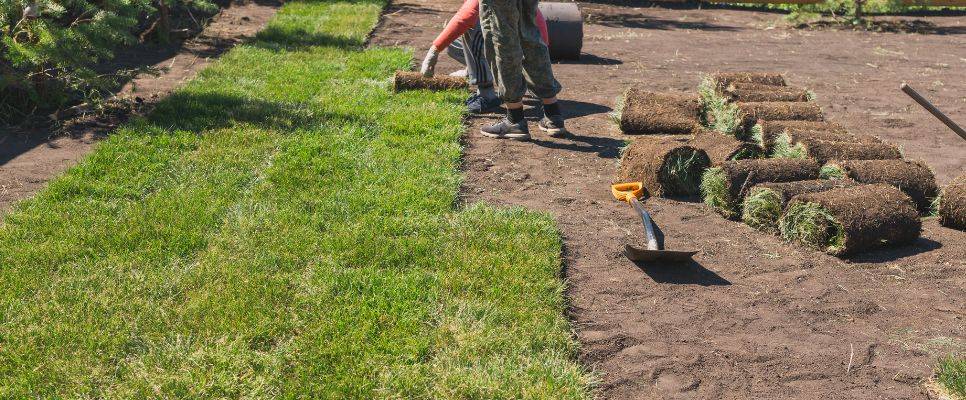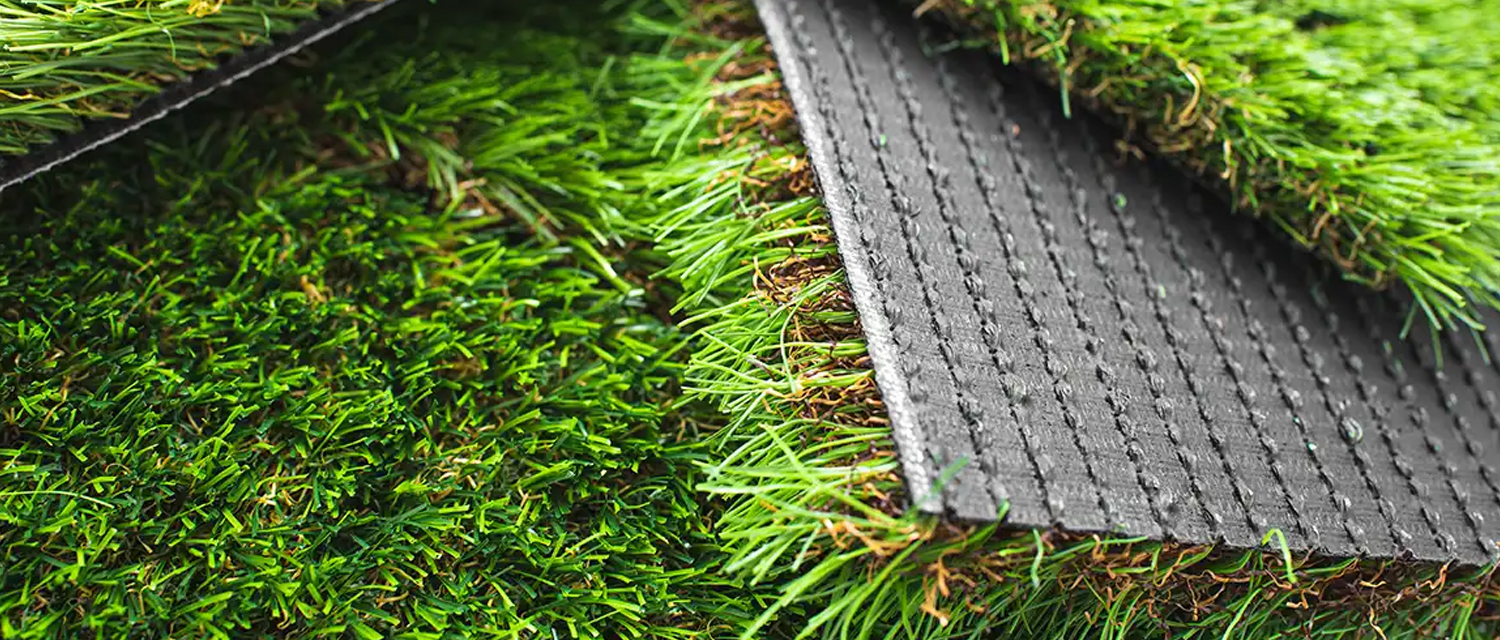How Much Does Artificial Turf and Synthetic Grass Cost
Synthetic artificial grass is rapidly gaining popularity and trending across Australia as a preferred solution for creating evergreen lawns. It's ideal for those seeking low-maintenance, soft, and beautiful lawns that stay lush and green throughout the year. Many individuals find natural grass challenging due to the time and effort required for regular lawn care to keep it fresh, healthy, and vibrant. For those in Western Australia, exploring fake lawn prices Perth can be a great starting point when considering a more convenient and cost-effective alternative to traditional turf.
This is where synthetic grass installation becomes a fantastic alternative. With its durability, minimal upkeep, and realistic appearance, artificial turf transforms outdoor spaces for residential and commercial properties.
Before making the switch to synthetic turf, it’s essential to understand the cost of artificial grass and the key factors influencing your budget. From installation expenses to material quality, let’s explore how much synthetic artificial grass costs in Australia and what you need to know before getting started.
Average Cost of Artificial Grass Cost Per m2 in Australia
Synthetic artificial grass in Australia typically costs between $40 and $75 per square meter, including installation and shipment. The quality, size, and amount of preparation needed all affect the cost. Larger installations or more upscale alternatives can average toward the upper end of this range. Different synthetic grasses have different prices. Check here the prices for different available options.
- Low to Mid-Priced Synthetic Grass: The cost per square metre for synthetic grass of basic to mid-range quality ranges from $50 to $75. This is a well-liked option for anyone seeking an affordable fix with appealing aesthetics and durability.
- Better Quality or Complex Installation: The cost per square metre would be between $75 and $100 if you're looking for higher-quality synthetic grass or have certain installation needs. The range includes installations with complex elements or customisation as well as high-end synthetic grass options that closely mimic natural grass.
Job-Specific Costs for Synthetic Grass Installation in Australia
These cost breakdowns are based on the individual jobs associated with synthetic grass installation:

Types Of Artificial Grass And Its Cost Per Square Metre
Here’s a breakdown of common types of artificial grass along with their estimated costs per square metre (m²) :
- Polyethylene Grass: Soft, durable, and realistic. This type is commonly used in lawns of homes as well as children’s playgrounds. It costs $16 - $32 per m².
- Polypropylene Grass: In most cases, this is the cheapest grass; ideal for accommodating low utilization areas or for trial purposes. It costs $9 - $22 per m².
- Nylon Grass: Coined to be very hard-wearing and antistatic, perfect for public use and sporting floors. It costs from $22 - $55 per m².
- Blended Grass: Integrated designs allow two or more materials (like polyethylene and nylon) to be used to provide the best experience. This costs between $20 - $37 per m².
- Sports Turf: Designed for sports fields, with all its features and characteristics of durability and optimal performance. This costs between $32 - $65 per m².
- Pet-Friendly Grass: Intended with specifications for drainage system and softer flooring for pets, including the option for features such as antimicrobial. This costs between $22 - $44 per m².
- Luxury Grass: Premium solutions that present a realistic possibility of replacing real grass, and differentiated blade forms and tones. This costs between $32 - $75 per m².
How Much Does Artificial Grass Turf Cost In Australia?
The cost of artificial grass in Australia depends on factors such as quality, brand, and type of grass. Currently, the cost range is generally about $30 to $100 per square metre on average. There are turf varieties that can cost as little as $70 to $100, and these offer much better quality than normal and also look more natural.
Other costs may also make up the total budget, including installation costs, which typically cost between $20 and $40 per square metre. Hence, where containment is used in materials plus installation, the total cost may fall between $50 and $140 per square metre.
Further, it is also important to consider regional differences and certain project needs which define the cost. It is always wise to seek at least three quotes to understand artificial grass installation costs.
How Much is Artificial Grass Installation Final Cost?
The total cost of installing synthetic grass ranges from $2,500 - $6,500. The total cost of artificial grass depends on the type of grass you choose, the complexity of the installation, and site characteristics. Here’s a detailed breakdown:
- Quality of Turf: The cost of artificial grass can greatly vary between $30 and $100 per square metre, close to or more than the real thing.
- Type of Grass: There are price differences between styles, for instance, realistic look and sports-grade styles.
- Durability: Durable grasses have higher UV resistance and provide longer warranties. This may increase cost by $50 to $200.
- Average Price Range: The average cost a homeowner is likely to pay will range between $50 and $80 per square metre for medium to high-quality grasses.
- Labour Charges: Additional cost typically costs between $20- $40 per sqm for installation cost.
- Site Preparation: Ground levelling takes time where extensive grading or shaving off existing grass is required and therefore the time and cost implications are high.
- Accessibility: Remote locations can take longer for teams to reach and will contribute to labour costs.
- Removing Existing Turf: This ranges between $5 to $15 for every square metre of the main, secondary or external appearance.
- Base Materials: Retails or sub-base of gravel or decomposed granite for drainage add $10 to $20 per square metre.
- Drainage Solutions: If your site needs drainage systems, this will also have an added cost. These basic drainage installations cost between $5 and $15 per square metre.
- Edging: Using the edging materials to border the turf can cost between $5 and $15 per metre.
- Infill Materials: For some types of turf, an infill is necessary for its stability; it can cost $5 to $10 per square metre.
How Much Does It Cost To Maintain Synthetic Grass?
Care of synthetic yet more than natural grass is often cheaper so it can be viewed as more financially sound in the long run. The initial cost of installation will usually be between $5 to $20 per square foot, depending on the level of work done on the equipment, and the type of location where the work is being done.
Maintenance is a continuous process and is subjected to the following processes. In basic cleaning, the soil surface is usually brushed or raked so that it will not easily accumulate debris and the grass blades stand upright and are also manageable at least cost. Sometimes, it’s required to use forceful washing to eliminate stains or dust and costs $0.10—$0.50 per square foot in case of using a service.
There is also the issue of infill replacement since in the future, you may find that you need to replace rubber or sand to keep up proper functioning and adequate shock absorption. It takes up to $1 to $ 3 per square foot for the construction of the infill and depends on the type of infill to be used.
Weed control is rare but may sometimes require the use of herbicides that go for between $20 to $50 per treatment. Small repairs that deal mainly with seams or small tears will require relatively little in the range of $50-$100 in materials while large repairs can cost between $1-$5 per square metre.
Cleaning to remove odours for the pet owners costs an additional $0.10 to $0.25 per square foot if you hire a service.
In essence, synthetic grass needs to be maintained once a year, thus the cost ranges between $100 and $500, depending on the area that is to be maintained. Such low maintenance requirement coupled with the flexibility of synthetic grass, then automatically makes them a preferred substitute for normal lawns.
Factors Affecting Synthetic Grass Installation Costs
- Artificial Grass Quality: The cost of synthetic grass is largely determined by its quality. There are low-to-mid-range alternatives available, but higher-end models are a bit more costly.
- Size of the Area: The total area that synthetic grass will cover will affect the final cost. Greater areas need more work and supplies, which raises costs.
- Preparation Work: This is the most important thing; if you want an effective and successful installation, you need to plan thoroughly, which will also impact your costs.
- Installation Complexity: The difficulty and complexity involved in installing synthetic grass also significantly impact the overall cost.

Benefits of Synthetic Grass in Australia
Synthetic grass offers so many benefits that you won't be able to resist installing it in Australia's dry climate. Here are some of them:
- One great thing about synthetic grass is that it can be installed almost anywhere, such as on roofs, sports grounds, residential lawns, and many other places.
- Synthetic grass does not require chemical treatments for maintenance, unlike natural grass, which often needs them.
- Synthetic grass saves both time and effort over time because it doesn't require fertilization, mowing, or weeding.
- No matter the climate in Australia, synthetic grass provides a lush green lawn all year round, making it the perfect choice for residents living across the country.
- Synthetic grass does not require constant watering like natural grass, which helps conserve water and is particularly beneficial in Australia's dry climate.
Choosing Synthetic Grass: Factors to Look Out For
Here’s a more detailed breakdown of each factor to consider when choosing synthetic grass:
- Types: Artificial grass is mostly produced from polyethylene, polypropylene and nylon. Polyethylene is the most familiar and has an elasticity that gives a soft touch, nylon is rather more resistant but might be rigid.
- Texture: This is important because the texture determines the real look and feel of the grass, making it an important consideration.
- Blade Shape: There are also flat, serrated, and C-shaped categories of blades. A combination of different forms is realistic.
- Colour Variations: Grass isn’t a flat plane; when selecting synthetic turf, ensure that the results are varied in green and brown.
- Pile Height: Short Pile (up to 1 inch): Designed to hold large amounts of water, best used in areas with high levels of traffic, or playing fields, and require less maintenance. Medium Pile (1 to 2 inches): A good balance between beauty and sturdiness; great for home lawn usage. Tall Pile (2 inches and above): Gives a rich look but may be more challenging to manage and can be neatly folded down quite effortlessly.
- Types of Infill: Again, one could use rubber, sand or both. Rubber gives the cushion and bounce necessary to a game and sand also assists in burdening the grass and making the blades stand upright.
- Durability and UV Resistance: Thicker patches generally require heavier types of grass that are capable of shedding wear and tear in a better manner. Make sure the colour does not fade due to the direct effects of ultraviolet light that affects most materials outside after some time.
- Drainage: Choose a backing layer that lets water pass through to avoid water buildup and incidences of mould formation. Proper infill makes it easier for water not to accumulate hence no chances of mould and bad odour.
- Safety Standards: Make sure the product is safe for use, especially in children’s play areas or pet areas.
- Maintenance Requirements: As you look for synthetic grass, think about how simple it is to clean and maintain the product. Every product is unique but some need less maintenance than others.
- Warranty: Product warranty is a significant sign on the part of the manufacturer that has developed the product to last long.
- Cost: One needs to balance the provision of quality and sustainable grass with the amount of money required for the whole exercise. While buying a cheaper product, one takes a lot of cash in his pocket but uses the money to replace the product after a short time.
Natural Grass vs Artificial Grass: Cost Comparison
The installation of natural grass is usually more expensive both initially, and in the long term than the installation of artificial grass. Here’s a comparison:
Initial Costs:
- Natural Grass Installation: Prices vary from $1-$3 per square of land ($11-$32 per m²) for the sod, costs of the preparation of the ground, levelling and possibly the installation of watering systems.
- Artificial Grass Installation: It is $5 to $20 per square foot ($54 to $215 per m²), less for the standard quality grass and higher for the quality and the installation is a bit complicated.
How Long Does Synthetic Grass Last?
The lifespan of synthetic grass might depend on specific factors, but a normal synthetic grass’ lifespan is between 8 and 15 years. Here are some key elements that influence its longevity:
- Quality of Materials: Using a better quality synthetic grass, which is manufactured from polyethylene or nylon will generally last longer than one made from inferior products.
- Installation: It is important to note that adequate installation is a key deciding factor for how long synthetic grass will last. The correct installation is done by professionals such that the right drainage and support are provided and normally the grass does not wear out easily.
- Usage: Accessibility of the area determines the number of feet that step on it, factors do affect how long the supplied grass lasts. Places that are used often will show it and will be worn out relatively soon while other areas will remain to look new for quite some time.
- Maintenance: Regular maintenance including brushing, washing, and replacement of infill will also increase the durability of synthetics. To extend its life, the surface itself should remain as free from debris as possible.
- Environmental Factors: This material tends to get damaged by rough weather conditions, UV light, and high or low temperatures. Systems added or incorporated in some products include ultraviolet light inhibitors that help prevent fading and deterioration.

Simple Tips for Synthetic Grass Maintenance
- You should use a stiff brush to keep the grass upright, especially in busy areas.
- You can use a leaf blower or gently sweep the synthetic grass to remove leaves and other debris from it.
- Sometimes you can simply wash the synthetic grass with water to remove pollen and dust particles.
- Rinse pet waste with water and clean it up as soon as possible.
- Avoid placing heavy or large objects directly on the synthetic grass to prevent damage.
- You can use adhesive for small repairs.
- If necessary, treat the edges with weed killer.
- If you notice signs of wear and tear anywhere, take timely action to repair and fix the affected areas.
Why Hire Professionals for Synthetic Grass Installation
Before hiring professional installers, the first thing you should do is confirm they are properly licensed, insured, and have expertise in synthetic grass installation. They have special tools and handling techniques that regular homeowners do not possess. They have many special and advanced tools along with a range of handling techniques, which not only save you time but also expedite the entire process.
If you want your installation to be successful without any stress, you should consider hiring professionals. By hiring them, you can remain tension-free throughout the entire installation process. Only opt for the DIY option if you are knowledgeable about all aspects of installation; otherwise, you might end up spending extra money if things go wrong.
Although they may charge more, after installation, you will realise that you have invested in the right place and made the right decision for installing synthetic artificial grass. They also guide maintaining synthetic grass so that it lasts for a long time.
Conclusion
It will be one of the best decisions if you install synthetic grass in Australia’s dry climate. We hope that your confusion about the cost of synthetic artificial grass is cleared, and you can now successfully install it.





![How Much Does Landscape Architecture Cost? [2025]](https://servicetasker.com.au/storage/2024/06/1719209079.jpg)
![How Much Does Landscaping Cost? [2025]](https://servicetasker.com.au/storage/2024/02/1707460349.jpg)



